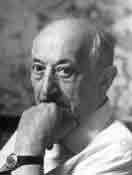Simon Wiesenthal

(1908-2005)
http://www.jewishvirtuallibrary.org/jsource/biography/Wiesenthal.html
- 1908
- 1928 - 1932
- 1936
- 1939
Hän sai lunastetua viime tipassa perheensä, itsensä, vaimonsa ja äitinsä, joutumasta Siperiaan lahjomalla NKVD komissaarin
- 1941
(the forced labor camp serving the Ostbahn Works the repair shop for Lvov's Eastern Railroad.)
- 1942 alkuvuosi
Early in 1942, the Nazi hierarchy formally decided on the "Final Solution" to the "Jewish problem" — annihilation.
Kautta miehitetyn Euroopan alettiin käynnistää kammottavaa kansanmurhakonetta.
Throughout occupied Europe a terrifying genocide machine was put into operation.
- 1942 elokuu
In August 1942, Wiesenthal's mother was sent to the Belzec death camp.
- 1942 syyskuu
By September, most of his and his wife's relatives were dead; a total of eighty-nine members of both families perished.
Wiesenthalin vaimolla oli vaaleat hiukset ja tästä oli nyt apua. Hän oli ns arjalaisen näköinen niin paljon ,että Wiesenthal saattoi tehdä sopimuksen Puolan maanalaisen vastarintaliikkeen (Polish underground) kanssa. Vastarintaliikkeeseen kuuluvat saivat häneltä hyviä karttoja ja hänen vaimonsa taas sai maanalaiselta järjestöltä uuden identiteetin Irene Kowalska, puolalalainen ja niin hän pääsi pois leiristä 1942 syksyllä . Ensin vaimo asui Varsovassa (Warsaw) kaksi vuotta ja oli sitten pakkotöissä Reininmaalla koskaan ilmaisematta juutalaista syntyperäänsä.
- 1943
Wiesenthal pääsi pakenemaan itäradan työleiriltä yli-inspektöörin sijaisen avulla vähän ennen ennen kaikkien vankien teloitusta.
With the help of the deputy director, Wiesenthal himself escaped the Ostbahn camp in October 1943, just before the Germans began liquidating all the inmates.
In June 1944, he was recaptured and sent back to Janwska where he would almost certainly have been killed had the German eastern front not collapsed under the advancing Red Army.
SS- kaartien oli lähdettävä nyt vetäytymään länteen päin. (Kaikista 149 000 Lvovin juutalaisesta oli tässä vaiheessa jäljellä vain 34 ihmistä. Simon Wiesenthal oli yksi heistä ). SS- kaartien piti kuitenkin saada itselleen henkivakuutus, joten jonkinverran täytyi olla vankeja olemassa, kun he palasivat. ja niinpä jokaista vankia "vahti" noin 6 SS- miestä vetäytyvässä kaartinjoukossa. Lisäksi vankijoukkoon ryöstettiin täydennykseski kirkollinen väkeä matkan varrelta Chelmiec nimisestä kylästä.
Knowing they would be sent into combat if they had no prisoners to justify their rear-echelon assignment, the SS guards at Janwska decided to keep the few remaining inmates alive.
With 34 prisoners out of an original 149,000, the 200 guards joined the general retreat westward, picking up the entire population of the village of Chelmiec along the way to adjust the prisoner-guard ratio.
Vangeista hyvin harva selvisi hengissä tästä kuolemanmarssista: Plaszow-Gross-Rosen- ja Buchenwald ja lopuksi Mauthausen Ylä-Itävallassa.
Very few of the prisoners survived the westward trek through Plaszow, Gross-Rosen and Buchenwald, which ended at Mauthausen in upper Austria.
With the help of the deputy director, Wiesenthal himself escaped the Ostbahn camp in October 1943, just before the Germans began liquidating all the inmates.
- 1944 kesäkuu
In June 1944, he was recaptured and sent back to Janwska where he would almost certainly have been killed had the German eastern front not collapsed under the advancing Red Army.
SS- kaartien oli lähdettävä nyt vetäytymään länteen päin. (Kaikista 149 000 Lvovin juutalaisesta oli tässä vaiheessa jäljellä vain 34 ihmistä. Simon Wiesenthal oli yksi heistä ). SS- kaartien piti kuitenkin saada itselleen henkivakuutus, joten jonkinverran täytyi olla vankeja olemassa, kun he palasivat. ja niinpä jokaista vankia "vahti" noin 6 SS- miestä vetäytyvässä kaartinjoukossa. Lisäksi vankijoukkoon ryöstettiin täydennykseski kirkollinen väkeä matkan varrelta Chelmiec nimisestä kylästä.
Knowing they would be sent into combat if they had no prisoners to justify their rear-echelon assignment, the SS guards at Janwska decided to keep the few remaining inmates alive.
With 34 prisoners out of an original 149,000, the 200 guards joined the general retreat westward, picking up the entire population of the village of Chelmiec along the way to adjust the prisoner-guard ratio.
Vangeista hyvin harva selvisi hengissä tästä kuolemanmarssista: Plaszow-Gross-Rosen- ja Buchenwald ja lopuksi Mauthausen Ylä-Itävallassa.
Very few of the prisoners survived the westward trek through Plaszow, Gross-Rosen and Buchenwald, which ended at Mauthausen in upper Austria.
- 1945 toukokuu
Heti kun Simon Wiesenthal tunsi voimiensa alkavan palata, hän ryhtyi kokoamaan ja dokumentoimaan todisteita natsien julmuuksista US armeijan Sotarikososastolle. Sodan jäkeen hän työskenteli myös armeijan strategiselle palvelulle (OSS ) ja vastavakoilujoukoille (CIC). Hän johti myös Itävallan amerikkalaisen vyöhykkeen juutalaista keskuskomiteaa, avustusorganisaatiota.
As soon as his health was sufficiently restored, Wiesenthal
began gathering and preparing evidence on Nazi atrocities for the War
Crimes Section of the United States Army.
After the war, he also worked for the Army's Office of Strategic Services and Counter-Intelligence Corps and headed the Jewish Central Committee of the United States Zone of Austria, a relief and welfare organization.
Late in 1945, he and his wife, each of whom had believed the other to be dead, were reunited, and in 1946, their daughter Pauline was born.
Käännös jatkuu ..
After the war, he also worked for the Army's Office of Strategic Services and Counter-Intelligence Corps and headed the Jewish Central Committee of the United States Zone of Austria, a relief and welfare organization.
- 1945 vuoden loppu - 1946
Late in 1945, he and his wife, each of whom had believed the other to be dead, were reunited, and in 1946, their daughter Pauline was born.
Inga kommentarer:
Skicka en kommentar